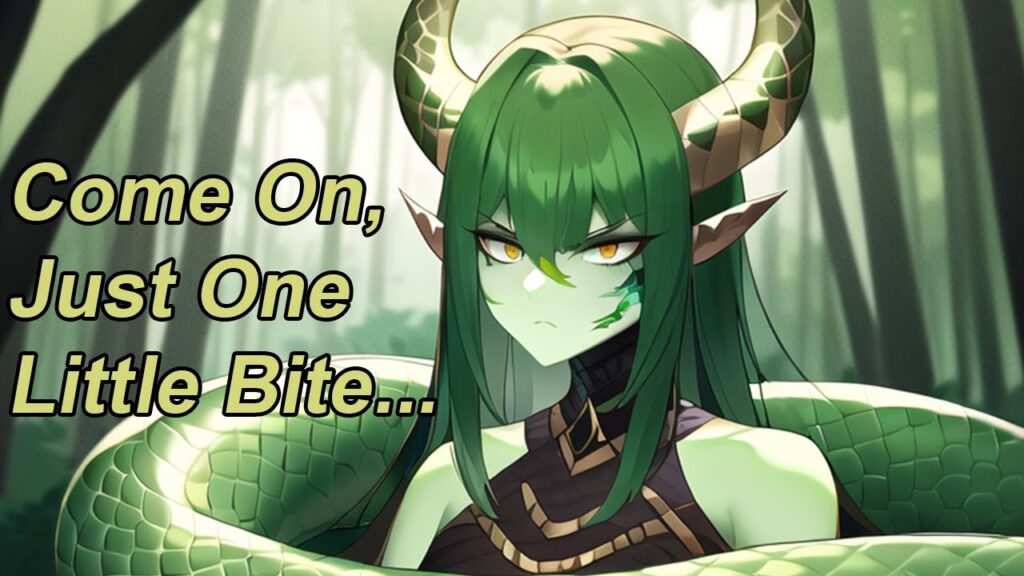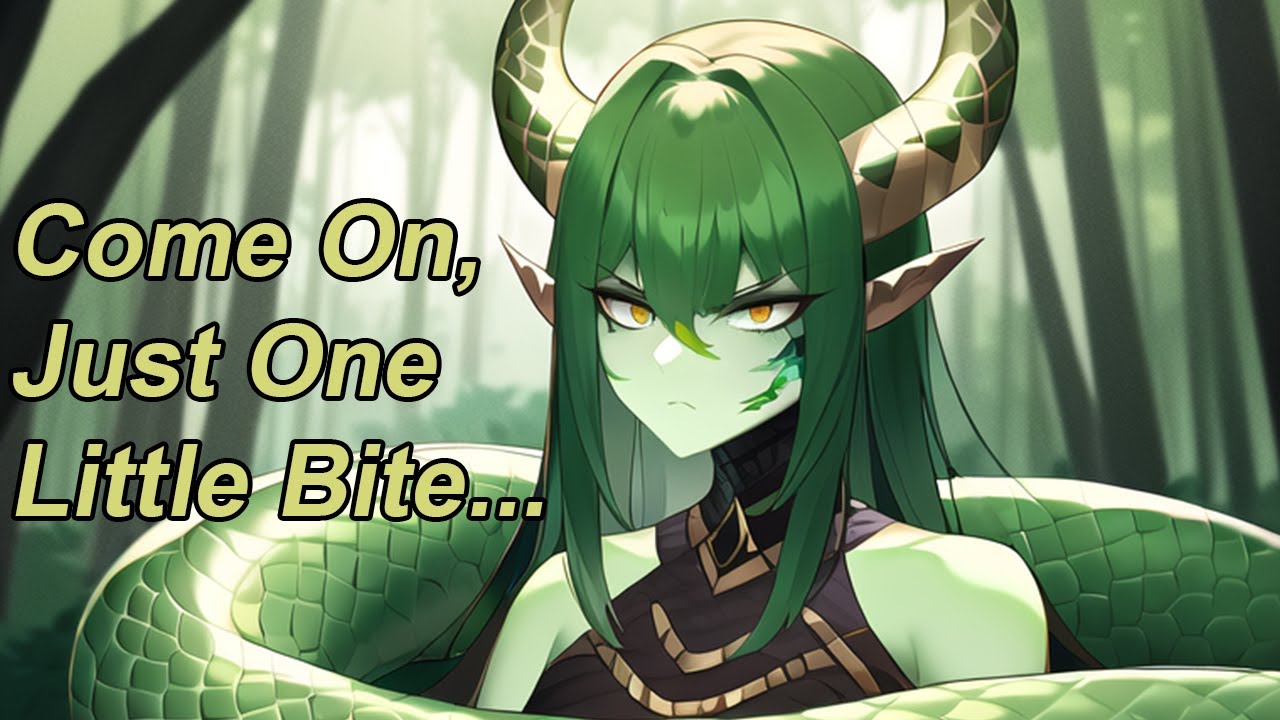
Lamia in Monster Musume: Exploring the Allure and Cultural Context
The lamia, a mythological creature often depicted as having the upper body of a woman and the lower body of a snake, has captivated imaginations for centuries. In the realm of modern media, particularly anime and manga, the lamia has found a renewed popularity, exemplified by characters within series like Monster Musume. This article delves into the portrayal of lamia within Monster Musume, examining their allure, cultural context, and the broader themes they represent. We will also explore the history of the lamia myth and how it influences modern interpretations.
The Lamia: From Myth to Modern Monster Girl
The lamia‘s roots trace back to ancient Greek mythology. Initially, lamia was depicted as a child-eating demon, a figure used to frighten children into obedience. Over time, the lamia evolved into a more complex figure, often portrayed as a beautiful woman who preyed on men, driven by grief or a curse. This duality – beauty and danger – has remained a consistent element in the lamia‘s portrayal throughout history.
In contemporary media, the lamia has undergone a significant transformation. Often presented as a monster girl, the lamia is reimagined as a generally benevolent or at least non-threatening character. This shift is evident in series like Monster Musume, where lamia characters are often portrayed as affectionate, albeit sometimes possessive, companions. This transformation reflects changing societal attitudes towards monsters and a growing interest in exploring the potential for harmony between humans and non-human beings. Understanding this history is crucial to appreciate the modern lamia.
Lamia in Monster Musume: A Character Study
Monster Musume features several lamia characters, each with unique personalities and quirks. Miia, perhaps the most prominent lamia in the series, embodies the modern interpretation of the creature. She is depicted as fiercely loyal and deeply in love with the protagonist, Kimihito Kurusu. Her serpentine form is often played for comedic effect, highlighting the challenges and absurdities of interspecies relationships. While Miia exhibits some possessive tendencies, these are typically portrayed as endearing flaws rather than malicious traits. The core of the character revolves around her deep affection for Kimihito and her anxieties surrounding their relationship. This approach humanizes the lamia, making her relatable and sympathetic to audiences.
Other lamia characters in Monster Musume may offer variations on this theme, exploring different aspects of the lamia archetype. Some may emphasize the creature’s seductive nature, while others may focus on their connection to nature or their unique physical abilities. Regardless of their specific traits, these characters contribute to the series’ overall exploration of acceptance, diversity, and the challenges of coexisting with those who are different.
The Allure of the Lamia: Why are they so Popular?
The enduring popularity of the lamia can be attributed to several factors. Firstly, their hybrid form – a combination of human and animal traits – is inherently intriguing. This unique design allows for a blend of beauty and the exotic, appealing to a wide range of aesthetic preferences. The serpentine lower body also introduces a sense of power and danger, adding an element of excitement to the character.
Secondly, the lamia often represents a departure from traditional beauty standards. Their non-human features challenge conventional notions of attractiveness, offering a more inclusive and diverse representation of beauty. This can be particularly appealing to audiences who feel marginalized or excluded by mainstream media. The lamia, in this sense, becomes a symbol of acceptance and self-love.
Finally, the lamia often embodies themes of transformation and fluidity. Their ability to shed their skin, both literally and figuratively, can be interpreted as a metaphor for personal growth and change. This resonates with audiences who are navigating their own identities and seeking to embrace new experiences. The lamia, therefore, becomes a symbol of resilience and adaptability.
Cultural Context and Interpretations
The portrayal of the lamia in Monster Musume is not without its critics. Some argue that the series perpetuates harmful stereotypes about women, particularly in its depiction of Miia’s possessiveness. Others criticize the sexualization of monster girls, arguing that it objectifies non-human characters and reinforces problematic gender dynamics. These criticisms are valid and warrant careful consideration.
However, it is also important to recognize the potential for positive interpretations. Monster Musume can be viewed as a playful exploration of interspecies relationships, challenging viewers to confront their own prejudices and biases. The series’ emphasis on acceptance and understanding can be seen as a progressive message, promoting tolerance and empathy. Ultimately, the interpretation of the lamia in Monster Musume is subjective and depends on the individual viewer’s perspective.
The Role of Fan Art and Cosplay
The popularity of lamia characters in Monster Musume has spawned a thriving fan community. Fan art and cosplay are particularly prevalent, allowing fans to express their appreciation for the characters and engage with the series in creative ways. These forms of expression often explore different aspects of the lamia archetype, offering alternative interpretations and expanding the character’s potential. [See also: Monster Musume Cosplay Guide] Fan art can range from lighthearted and humorous depictions to more serious and introspective explorations of the character’s psychology. Cosplay, in particular, allows fans to embody the lamia, experiencing the character’s physicality and connecting with the series on a deeper level.
The Future of Lamia in Media
The lamia‘s enduring appeal suggests that they will continue to appear in various forms of media for years to come. As societal attitudes towards monsters and interspecies relationships evolve, the portrayal of the lamia is likely to adapt and change as well. Future iterations of the lamia may explore more complex themes, such as the challenges of integration, the ethics of genetic engineering, and the nature of identity. The lamia, therefore, remains a powerful and versatile symbol, capable of reflecting our changing values and anxieties.
Conclusion: The Enduring Legacy of the Lamia
The lamia, from its origins as a fearsome demon to its modern incarnation as a beloved monster girl, has undergone a remarkable transformation. In Monster Musume, the lamia represents a complex and multifaceted character, embodying themes of beauty, danger, acceptance, and transformation. While the series’ portrayal of the lamia is not without its controversies, it ultimately offers a unique and engaging exploration of interspecies relationships and the challenges of coexisting with those who are different. The lamia is a testament to the enduring power of mythology and the human capacity for imagination. The evolution of the lamia character demonstrates how cultural narratives can shift and adapt over time, reflecting changing societal values and perspectives. The lamia‘s story is one of adaptation, resilience, and the ongoing quest for understanding and acceptance. The lamia‘s continued presence in popular culture ensures that its story will continue to evolve and inspire for generations to come. The lamia truly has secured its place in popular culture.

